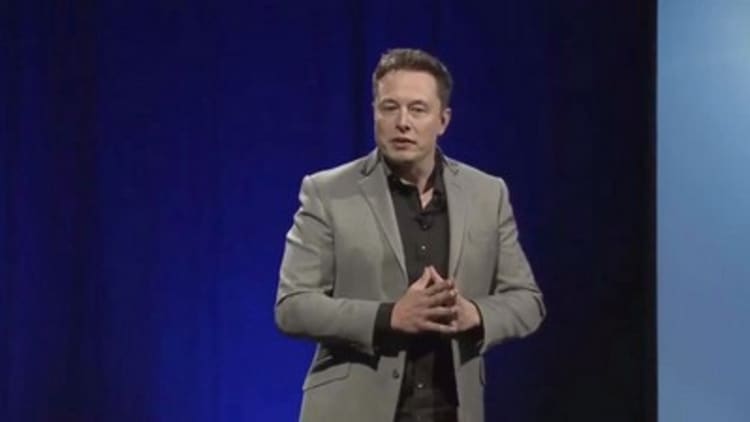Elon Musk and Regina Dugan made ambitious promises this month about how fast their new research projects into human telepathy could yield big scientific breakthroughs.
So we asked three experts in neuroscience to give us a reality check on the stated goals of these efforts by Facebook's Building 8 research lab and Musk's newest company, Neuralink.
While all three welcomed the entry of well-known Silicon Valley figures with deep pockets to the challenge, all three were highly skeptical of the timelines that Dugan and Musk laid down for unlocking the mysteries of how the human brain communicates with the rest of the body.
"It's exciting that these people think it's a problem worth solving, but I'm highly skeptical that we'll be putting these in healthy people within 10 years," says Andrew Pruszynksi, the Canada Research Chair in sensorimotor neuroscience and assistant professor at Western University in Ontario, Canada.

Pruszynski was referring to Neuralink's objective of implanting tiny electronic devices into the brains of healthy humans within a decade.
The goal, according to Musk, is to merge the human brain with machine intelligence so humans can keep up with the ever-more-powerful computers of the future.
Musk, better known as the CEO of electric car-maker Tesla and space travel company SpaceX, says he wants to prevent artificial intelligence from becoming the "other" entity that may someday decide to destroy us pesky humans.
"I'm highly skeptical that we'll be putting these in healthy people within 10 years."Andrew PruszynksiProfessor, Western University
Why it's so hard
The idea of augmenting humans with machine intelligence for their own protection may be a new one, but research into how the brain records sensory input and uses it to drive physical responses is "an outlandishly difficult problem" that people have been working on since the 1960s, Pruszynski says.
There are two big challenges with the research: first, accurately recording the brain's neural activity to know which parts are being used to record outside stimuli; second, figuring out how the brain sends the resulting signals out to the peripheral nervous system, which allows a person to move an arm, leg or other body part.
"Trying to get accurate info out of the brain is very difficult," says Pruszynski.
Bradley Wyble, an associate professor of psychology at Penn State University who's studied how the brain turns visual stimuli into ideas, agrees.
Wyble took issue with Regina Dugan's prediction, laid out in a Facebook post, that the company will be building a system to demonstrate that humans can type at a rate of 100 words per minute using only their thoughts "over the next two years."
"That's extremely aggressive," for a such a brain-to-text system, says Wyble.
In a keynote speech at a Facebook conference in San Jose, CA, on April 19, Dugan spoke of the brain in terms usually reserved for computers, as she talked about how "speech is a compression algorithm."
Wyble disagrees. Although the brain is like a computer in that it can store and transmit information, Wyble says "We don't understand the input/output part...the brain has a lot of competing ideas and only some get shared with the outside world."
For example, the brain is very good at helping humans choose which visual stimuli to ignore, and which to act upon.
"Think of the difference between looking for your car keys and seeing a bear running through your house," Wyble explains.
In the first case, the brain filters out a large number of visual clues until we find our keys. In the second, the sight of the bear would cause an immediate physical response.
"People have been working on this for decades...and still don't know what algorithm the brain is using," Wyble says.
Going into the skull
Much of the research to come will be shaped in part by the fact that invasive research, such as implanting sensors inside of somebody's brain, can yield more accurate data on neural activity than non-invasive ones. Yet, invasive techniques are much harder to execute because of ethical, medial and practical concerns.
"The resolution of invasive (research) is orders of magnitude better," says Graeme Moffat, a former post-doctoral fellow in brain research who's now vice president of research and regulatory affairs at Interaxon, a privately held Toronto company that makes the MUSE, a brain-sensing headband.
Yet invasive research carries a risk of infection and is usually reserved for patients with catastrophic high-spinal cord injuries, like those that result in quadriplegia, or in people with uncontrollable seizures due to epilepsy.
While patients with problems to their peripheral nervous system could benefit from such techniques, putting wires through the skull of a healthy person so they can type directly from their brain is still far off in the future, Moffat says.
"No one has ever thrown the resources at this problem that Facebook plans to," says Moffat, who thinks increased spending by the private sector will lead to more public spending and increase the speed of research developments.
But, "How long could it take...to get to a real-time interface? We're more than a few years from that," he says.
CNBC.com reporter Christina Farr contributed to this report.



